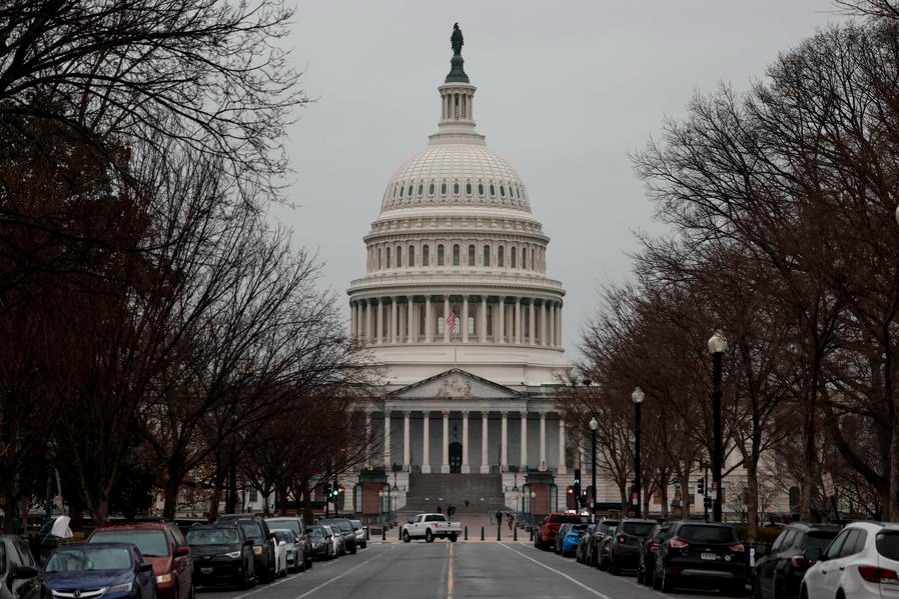25 years of tenge


The financial balance factor
Kazakhstan has introduced its own currency - tenge - a quarter of a century ago. It's hard to believe now that such a logical and well-formed step once was a subject for discussions on all levels of society. But it got clear within the first days of circulation of tenge that a number of currently important and systematic tasks of the economy were just solved in a blink of an eye. The question of supplementing the economy with money was out of the agenda now. Kazakhstan was able to come to the independent monetary policy right away.
Alevtina DONSKIKH
Establishment of tenge in November of 1993 became one of the most important event in the chronicles of the young republic of ours. That was a historic step on the way of filling the country's sovereignty with the real support, which is an essential condition for providing deep social and economic reforms.
The macroeconomic stabilization and the establishment of market institutes in the country were made possible thanks to the country's consistent financial policy which was taking place from the tenge's birth, was written by the president Nursultan Nazarbayev in the introduction of the National Bank of Kazakhstan book dedicated to the 10 years of tenge.
And such an evaluation of the tenge's place in the life of the country is still important.
Now, quarter a century after the establishment of Kazakhstan's own currency, it can be said that the national currency, which was tested by the world crises, is now accustomed to the financial world and fully holds the money functions: a mean of payments, savings, monetary processes and measure of value. The financial system was created, progressing and strengthen together with tenge. We can't say those processes were painless. But within a quarter of a century a flexible financial system was formed in Kazakhstan and it has the abilities to adequately react to challenges and adapt to changing conditions.
With time, the monetary policy of National Bank of Kazakhstan has transformed to a quiet flexible system of monetary regulation which, on one hand, has a broad toolset for the fiscal work and, on the other hand, is not forced to make a big number of preventive measures - because of good distribution and steps for financial system stabilization, considered by Anna Bodrova, the senior analyst of Alpari (Moscow). National Bank is able to control the inflation since the transition to the inflation targeting - the index of the customer prices stopped its rapid growth towards the events in the economy of Kazakhstan, as well as outside of it. It actually is a good trend since the decrease of inflationary pressure helps business development and increment of households' purchasing power. In general, current monetary policy is validated as competent and optimal in the current conditions.
Retrospective is probably going to be there in the jubilee publications of mass media and TV shows. And it is naturally because the history of tenge and the country's financial system is full of events: receiving of investment ratings, early return of the debt to the International Monetary Fund, crises and desolations, bankrupting of banks and the banking sector consolidation, phases of growth that predominated crisis periods. If look closely at the national economy - it's obvious that the country has made a giant economic leap within these years.
In Kazakhstan during the years of independence was formed such a financial system, in which predominant part (70% by the end of Сентября 2018) is taken by the banking sector, a quarter of the sector is presented by the retirement fund and about 4% of the financial system’s active assets are presented with insurance, mortgage and microfinance organizations. The evolution of Kazakhstan banking sector has obviously showed that the stability of work of the financial system depends not on the quantity of the institutes that perform fundraising, but on their quality, – considered by Aigul Berdigulova, an analyst in the department of economic analysis of Eurasian Development Bank. – If there were 204 banks functioning in the country in 1993, by the end of 2002 there were only 38 banks, and by the end of October 2018 there are 28 functioning banks in Kazakhstan.
The modern stage of the history of tenge and financial system is not any less interesting and is full of events. Август 2015 can be taken as a starting point, when the essential changes in National Bank monetary policy were made. Before August 2015 the monetary policy of National Bank of Kazakhstan was adapting and increasing the resistance to external factors, but it became preventive after switching to the policy of inflation targeting and to the flexible exchange rate. It happened during not that simple time for the economy of Kazakhstan: world prices on the main products of Kazakhstan export were still dropping; currencies of Kazakhstan countries - business partners were becoming significantly weaker. As a result, there were unsteadiness of the foreign exchange market, increase in number of speculative transactions, exchanging of tenge deposits to dollar deposits, decreasing of banks tenge liquidity and, as a result, significant decline of confidence in the national currency and the National Bank in general.
The objective of the National Bank was to restore the balance in the money and foreign exchange markets, reduce inflation, regain confidence in the national currency and its policies, and preserve gold and foreign exchange assets. It was clear it isn’t a one-day task. Provide a clear signal to the foreign exchange market about the rigidity of the position of the financial regulator and the persistence of the announced strategy was the key in this aspect. Less than year was needed to the market to accept the new rules of the game. Here are some numbers. In 2014 and 2015, in order to maintain the exchange rate, record volumes of currency were sold in the domestic foreign exchange market: 22.4 417.6 and 12.7 707.2 billion USD. The dynamics of the gold and foreign currency reserves in 2015 was negative, the decline was of 4.6%. But since the beginning of 2016 gold and foreign currency reserves of the National Bank began to raise.
Inflation for Января - November 2015 amounted to 12.3%, and annual inflation in November of that year - 12.8%.
But inflation forecasts for the upcoming 2016 of the head of the National Bank, Daniyar Akishev, who had just assumed office, were more optimistic. Few people shared this optimism of the chairman of the National Bank of Kazakhstan, the “bumpiness” in the financial market was too strong. But, as it became clear a little later, Daniyar Akishev not only made promises and forecasts, but also knew what to do in this situation.
It so happened that a year later I had the opportunity to make my own “measurement” of inflation and business sentiment in Kyzylorda. Numbers and sentiments were already different. As the director of the regional branch of the National Bank of Kazakhstan Yernar Zhumabekov told then, the share of enterprises intending to take out a loan in 4th quarter was 16%, whereas three months ago it was only 12.6%. The executive director of the holding association "Kyzylorda Zharygy" Yerkebulan Yesenbayev also spoke about positive changes. If in 2015 there was an acute shortage of tenge liquidity, in 2016 the business was financed in tenge without obstacles. There was a decline in bank lending rates. If two years ago the rate of financing by banks was at a rate of 25% for working capital, now it is 15%. The difference of 10% is big profit for us, – he told than. In general, the business activity of enterprises in the region increased in the third quarter - the turnover of assets and current assets rose to 15.6% and 45.5%, respectively. And although the decline, which happened in 2015, has not been completely overcome, new positive trends have emerged in the region. The region had the lowest inflation rate over the 11 months of the year - 6.8%. Its was less than the republican level, which was 7.5% over the same period. At that time, Kyzylorda region was the leader in the growth of deposits of legal entities and individuals. If in the whole country deposits in tenge increased by almost 84%, here - by 143%, what was the best result among the regions.
That being said, the program of measures undertaken by the financial regulator and the government has worked equally effectively in the capitals and in the regions everywhere. The year 2016 was an indicative and turning point, which confirmed the correctness of the chosen strategy - inflation targeting and a floating exchange rate.
The results of the National Bank’s dedollarization policy are noticeable. The share of deposits in foreign currency decreased from a maximum level of 70% in January 2016 to 47.5% in September 2018. During this period tenge deposits doubled, including household deposits in tenge showed a threefold increase, while foreign currency deposits fell by almost 1/3. From the beginning of 2016 to September 2018, the tenge money supply increased by 83%. This also characterizes the effectiveness of the measures taken by the financial regulator.
What tools did the National Bank use to achieve the country's macroeconomic stability, to reduce the rate of inflation and inflation expectations, as well as the level of dollarization?
The base rate become the basic instrument of the agreement of sale and purchase, – explains the director of the department of research and statistics of the National Bank of Kazakhstan, Vitaliy Tutushkin. To ensure inflation in the specified parameters, the National Bank pursued a monetary policy with a main focus on interest rate policy under a tenge floating exchange rate regime. In Февраля 2016, the base rate was set at a fairly high level to reduce inflation. This allowed to stabilize the situation in the financial market, reduce devaluation and inflationary expectations. As inflationary processes slowed down, the base rate gradually decreased. For 3 years, it was reduced by almost 2 times. Currently it is 9.25%.
The most important outcome of the new course was the curb of inflation. Since the transition to inflation targeting, the National Bank has set itself the main task of reducing inflation to 4% by the end of 2020. Interim targets were set for consistently reducing inflation: 6-8% by the end of 2016-2017; 5-7% by the end of 2018; 4-6% by the end of 2019. In a little more than two years, the inflation rate was reduced almost threefold: from a maximum value of 17.7% in Июля 2016 to a minimum of 5.3% in October 2018. In addition, since 2017, the National Bank has managed to keep annual inflation within the established target corridor. Manageable, projected inflation is the most important condition for the progressive development of the economy. According to the National Bank estimates, in the anniversary year inflation will remain in the target corridor of 5-7%, and in 2019 it will be formed near the upper boundary of the new, lower target corridor 4-6%. The inflationary expectations of the population have also decreased. The measurement illustrates a clear downward trend: if in early 2018 the expected inflation, calculated on the basis of population survey results, was 7.1%, then in September it was 6.4%.
This also shows the degree of confidence in the National Bank, which pursues an open, predictable policy in the long-term horizon. Including the most sensitive market - foreign exchange. For three years, the logic of the floating exchange rate, the policy pursued by the National Bank became clear, and most importantly, there was a belief in the predictability of the financial regulator. Therefore, the population and companies have adapted to the realities of the exchange rate of tenge.
In order to increase the efficiency of its policy, the National Bank continuously improves tools and introduces new mechanisms into the market explained the director of the department of monetary operations of the National Bank of Kazakhstan, Aliya Moldabekova. Thus, from September 10 of 2018, the official exchange rate of tenge to the US dollar is set on the basis of the average exchange rate of the trading sessions with T + 1 settlement terms, what means, the next day. Calculations of T + 1 allow to better manage liquidity and help reduce volatility in the money market. And the Kazakhstan stock exchange has started to act as the central counterparty in the foreign exchange market since the October 1, and will insure such transactions.
The National Bank managed to solve the old problem of clearing problematic bank portfolios. As it turned out during the analysis of the problematic portfolios of the second-tier banks, until 2017 banks concealed the quality of loans in the financial statements, actively using a tool such as loan restructuring. Taking them into account, the real level of bad loans in 2012 was 41.5%, having decreased by 2018 to 23.6%, but according to official statistics, the level of bad loans shown by banks did not exceed 10%.
The real capitalization of banks, taking into account bad loans, was in the negative zone: the average capital adequacy ratio in the banking system was 17%, while the real level of capitalization of banks until 2017 was in the negative zone. Therefore, the National Bank launched a comprehensive program to improve the banking sector. Bad loans of BTA Bank, RBK Bank and four large banks were written off. As a result, capital adequacy returned to the positive zone.
Active lending in the period 2005–2007 under conditions of soft banking supervision had consequences not only for the shareholders of the banks, but also for the economy as a whole. Despite the measures taken by the government, the problem of non-performing loans has become serious. By 2010, the share of overdue loans began to be 1/5 of the loan portfolio and did not fall below this level until 2015 (in some years the share exceeded 30%), analyzed the situation and the measures taken by the financial regulator of Kazakhstan Aigul Berdigulova, the analyst of the economic analysis department of the Eurasian Development Bank.
In 2017, the National Bank and the government launched another round of consolidation in the banking sector, which is more resolute in taking measures to resolve the accumulated debt in the banking sector. For banks, incentives have been created to clean up their balance sheets from bad assets on the basis of parity solidarity, the National Bank’s supervisory mandate has been strengthened, and measures are being taken to switch to risk-oriented supervision. All together the measures taken should make it possible to unlock the potential of the country's banking sector and ensure sustainable growth in lending to the economy. As the first results, the decline in the share of overdue loans to 8.5% as of September 2018 can be noted.
The result of this work was: an increase in the volume of new loans issued for 9 months by 26% or 2 trillion tenge compared with the same period last year. Excluding the loan portfolio of banks undergoing restructuring and deprived of a license, the annual growth in lending to the economy was 7% or 816 billion tenge. According to the National Bank, the growth of bank loans in 2019 will exceed 10%.
This is only a part of the systematic decisions taken by the National Bank of Kazakhstan for the comprehensive rehabilitation of the financial system of the country. Along with the implementation of such projects as the support of mortgage borrowers and currency borrowers, the launch of the “7-20-25” programs, the development of a wide information network that allows to talk about the country's financial policy through all channels, provided a stable basis for further economic growth. According to preliminary data, for three quarters of the current year there was a significant improvement in the balance of payments of Kazakhstan. The current account deficit fell to $0.9 billion, compared with $4.6 billion last year.
A favorable atmosphere in the market has also become a kind of social “bonus”, which is ensured by confidence in both tenge and the policies of the National Bank. The financial regulator does not exclude the likelihood of challenges for the country's economy in the future. At the same time, the regulator directly states what the given policy will be, what response measures will be applied, why it is necessary and what the result will be. And it is these statements that stabilize the market, setting up to work in predictable, understandable conditions, with confidence in tenge.


































